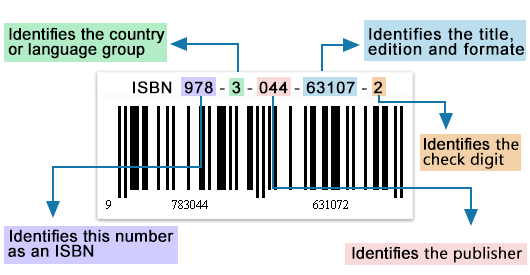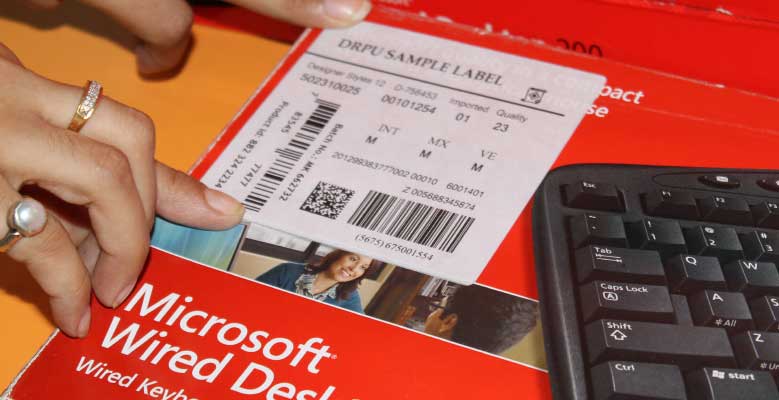What is an ISBN number, and How do you get it?
What is ISBN number?
ISBN stands for International Standard Book Number. ISBN 13 barcode is a unique identifier number that is used to encode the price of the book. With the help of ISBN numbers, you can do more productive marketing and dispersion of your books.
ISBN-13 barcode is created using the EAN-13 symbology with a special prefix and is assigned to individual books for production, ordering, or research.
The International Standard Book Number (ISBN) barcode is a unique barcode used to identify books, e-books, audiobooks, and other types of publications.
Structure of ISBN:
An International Standard Book Number contains ten or thirteen digits. Each 10-Digit ISBN is divided into four parts of variable length, with each part when printed being separated by a hyphen or space, and 13-digit ISBN is comprised of five elements, including a 3-digit EAN prefix that identifies the book industry.

- Prefix Element: It is always 3 digits in length and the only possible prefixes are 978 or 979.
- Group Identifier: Group or country identifier a national or language area where book was published.
- Publisher Identifier: Publisher identifier, which indicates the identification of a particular publisher within a group.
- Title Identifier: Title identifier consists of up to six digits, which identify a particular title or edition of a title.
- Check Digit: Check digit is the single digit which validates the ISBN and helps avoid errors in transmission.
Why ISBN Numbers are used?
An ISBN identifies the registrant, title, edition, and format of products, and it is very easy to track records of books. ISBN-13 is important for e-books, paperbacks, and hardcover, so each has their own ISBN, which is important for ordering, sales reporting, and inventory control.
For booksellers and librarians, ISBNs are important in ordering processes and publishing every book in the world. Each variation of a book title has a unique ISBN.
How to get ISBN Number?
ISBN numbers are provided to publishers by exclusive national ISBN agencies. You need to register as a publisher, and then authority will provide a number to the author for his book. Educational institutions need to apply for getting an ISBN number through their Head of Institution or Registrar of the University.
How to design barcode labels for books using ISBN barcode font:
You can use Barcode Maker Software to generate barcode labels using ISBN font. Through software, you can get the barcode as an image file to be added to the back cover design of your book. There you can enter the ISBN numbers you have and get your multiple barcodes generated using the batch processing feature.
Software is able to create barcode labels with different numbers on each product. You will save labels in either PDF or different image formats such as jpg, PNG, etc.
Benefits of ISBN Number
ISBN numbers help to include your books in the databases that are used by booksellers and libraries to search for particular books.
By using ISBN numbers, you can link the most essential information about your books. It also helps you gather the information that can be very helpful to you.
Enables correct use of different product forms to be differentiated, enabling comparisons between different subject areas and publishing houses.
With the help of ISBN numbers, you can do more productive marketing and dispersion of your books.
ISBN numbers help any book store to analyze their sales and orders.
How ISBN Barcode is different from other Barcode used by publishers?

1 Unique Identification Font:
The ISBN barcode provides a unique identification number for each book or publication, allowing it to be easily tracked and managed throughout the supply chain.
2 International Standard Font:
The ISBN barcode is an international standard, meaning that it is recognized and used around the world. This ensures consistency and accuracy in identifying publications, regardless of where they are produced or distributed.
3 Information Encoded Font:
The ISBN barcode typically encodes the 13-digit ISBN number, which contains information about the publisher, title, edition, and format of the book or publication
4 Placement On The Book Font:
The ISBN barcode is typically printed on the back cover or inside front cover of the book, in a standardized location and size.
5 Industry-Specific Requirements Font:
The ISBN barcode is subject to industry-specific requirements, such as the need to include a human-readable version of the ISBN number and to ensure that the barcode is scannable by common barcode scanners used in the publishing industry.
Overall, the ISBN barcode is a critical tool for publishers, booksellers, and librarians, providing a standard way to identify and track publications throughout the supply chain.